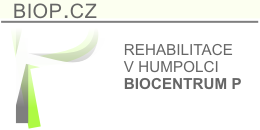

O Biocentru P
To Buy Keflex Online Visit Our Pharmacy ↓
 The Science Behind Keflex: How It Fights Bacteria
The Science Behind Keflex: How It Fights Bacteria
Keflex, also known by its generic name cephalexin, emerges as a potent ally in the fight against bacterial infections. Belonging to the class of drugs known as cephalosporin antibiotics, it operates as a formidable opponent to a wide array of gram-positive and some gram-negative bacteria. Its role in combating bacterial infections has gained prominence since its approval by the FDA, offering clinicians a reliable option in their antimicrobial arsenal. The drug's effectiveness traces back to its adeptness at interfering with the bacteria's ability to synthesize cell walls, a critical component for their survival and replication.
The advent of Keflex marked a significant milestone in the development of antibacterial therapies since its introduction in the 1960s. Its effectiveness is fueled by its bactericidal nature, meaning it doesn't just inhibit bacterial growth; it outright kills the bacterial cells. Keflex achieves this by binding to specific penicillin-binding proteins within the bacterial cell wall, leading to the disruption of wall synthesis and ultimately causing cell lysis, or breaking apart of the bacterium. This mode of action renders it an invaluable resource in the clinical setting against susceptible bacterial strains that threaten human health.
The Mechanism of Action: Keflex's Targeted Attack
Keflex, a brand name for the antibiotic cephalexin, launches its assault on bacterial invaders by targeting the fundamental building blocks of their cell walls. It belongs to a class of antibiotics known as cephalosporins, which operate by hindering the synthesis of peptidoglycan, an essential component of bacterial cell walls. Without a stable cell wall, bacteria cannot maintain their cell integrity, leading to cell lysis and death. This process is particularly effective against gram-positive bacteria, which rely heavily on a thick peptidoglycan layer for protection.
Despite its powerful effects on the bacteria it targets, Keflex is mindful of human cells. As these cells lack the peptidoglycan structures that Keflex attacks, the antibiotic can be taken at doses that are harmful to bacteria but remain safe for human tissue. The drug's effectiveness is harnessed in a way that avoids harming the host organism, making it a precise weapon in the arsenal against bacterial infections. This selective toxicity underlies many antibiotic strategies and is crucial for their therapeutic success.
Spectrum of Efficacy: Understanding Keflex's Reach
Keflex, generically known as cephalexin, belongs to the class of antibiotics referred to as cephalosporins. It operates effectively against a wide array of gram-positive bacteria and is moderately active against gram-negative bacteria. By inhibiting the synthesis of peptidoglycan, a vital component of bacterial cell walls, Keflex disrupts bacterial growth and replication. This broad-spectrum antibiotic is often employed as a first-line defense in treating respiratory tract infections, otitis media, skin infections, and urinary tract infections, showcasing its extensive reach in tackling common bacterial ailments.
However, the extent of Keflex’s efficacy is tempered by its inability to combat certain strains of bacteria, such as those producing beta-lactamases which can neutralize the drug's effect. Its reach, while impressive, does not extend to methicillin-resistant Staphylococcus aureus (MRSA) or Enterococcus, highlighting the necessity for proper bacterial diagnosis to ensure effective treatment. Despite these limitations, Keflex remains a cornerstone in the arsenal against susceptible bacterial infections due to its broad range of action and efficacy in treating numerous uncomplicated infections in outpatient and inpatient settings.
Resistance Isn't Futile: Keflex Versus Bacterial Defense
Keflex, known generically as cephalexin, is a potent antibiotic that belongs to the cephalosporin class, drugs renowned for their efficacy against a broad range of bacterial infections. However, with the rise of antibiotic resistance, certain strains of bacteria have developed mechanisms to evade the lethal action of cephalexin. One such common mechanism of resistance involves the production of beta-lactamase enzymes, which can break down the antibiotic molecule, rendering it ineffective. This evolutionary arms race pushes medical science to continually monitor resistance patterns and develop strategies to counteract these bacterial defenses.
In response to the challenge of resistance, healthcare providers may employ a combination approach, prescribing cephalexin alongside beta-lactamase inhibitors, which thwart the enzymatic breakdown of the antibiotic. Moreover, ongoing research and surveillance programs aim to track the prevalence of resistant strains, guiding the appropriate use of cephalexin to conserve its effectiveness. Prescribing practices also emphasize the importance of using antibiotics judiciously, avoiding overuse which often accelerates the emergence of resistant bacteria. These measures help maintain Keflex’s place in the antimicrobial arsenal, ensuring it remains a valuable tool in fighting bacterial infections.
Safety and Side Effects: Weighing the Balance
Keflex, generically known as cephalexin, is generally well-tolerated when used as prescribed. Common side effects may include gastrointestinal discomforts such as diarrhea, nausea, vomiting, and abdominal pain. Some patients might experience hypersensitivity reactions characterized by skin rashes or, in rare cases, more severe reactions like Stevens-Johnson syndrome. It's important for individuals to inform their healthcare provider of any known allergies to cephalosporin antibiotics since cross-reactivity with penicillin can occur in some cases.
Despite its effectiveness, the misuse or overuse of Keflex can lead to the development of antibiotic-resistant bacteria. Patients should adhere strictly to their prescription, avoiding both underdosing and premature discontinuation of the medication to prevent resistance. Additionally, while Keflex is safe for most populations, it should be administered with caution in individuals with renal impairment or those with a history of gastrointestinal disease, particularly colitis. Monitoring by healthcare professionals helps to ensure the medication's efficacy while minimizing potential adverse effects.
Keflex in the Real World: Clinical Uses Explored
In clinical settings, Keflex, known generically as cephalexin, is commonly prescribed to treat a variety of bacterial infections. Its uses span from straightforward skin infections such as cellulitis to more complex infections like otitis media, streptococcal pharyngitis, and urinary tract infections. Due to its efficacy against both Gram-positive and some Gram-negative bacteria, it has become a first-line treatment, particularly for those who are allergic to penicillin. In cases of uncomplicated infections, Keflex offers a convenient dosing regimen, which improves patient compliance and outcomes.
The drug’s role extends to prophylactic applications, such as preventing infections in patients undergoing dental procedures who may be at risk for endocarditis. Moreover, Keflex occasionally serves as part of a combination therapy for more aggressive infections that demand broader bacterial coverage. Its oral formulation allows for outpatient treatment, enabling effective management of conditions that would otherwise require hospitalization for intravenous antibiotics. Keflex's versatility and relatively mild side-effect profile underscore its importance in the arsenal against bacterial infections in various outpatient and inpatient scenarios.
https://buynoprescriptiononlinerxx.net http://abucm.org/assets/pdf/prelone.html http://abucm.org/assets/pdf/ventolin.html





